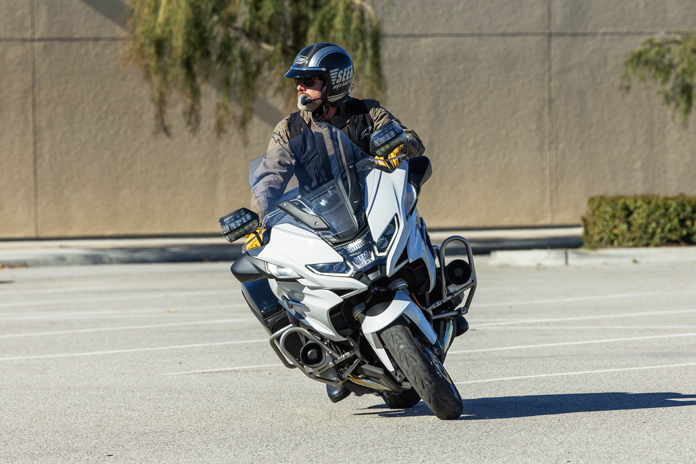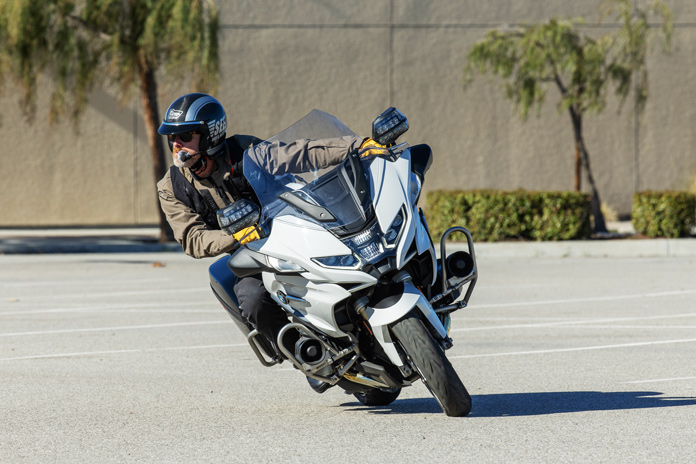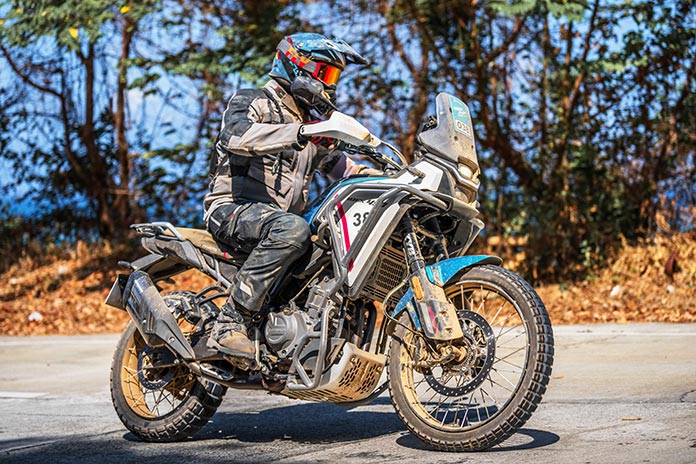
I believe it’s honest to say there are a couple of topics we should always all avoid if we need to foster a harmonious relationship with different people. Politics and faith are apparent land mines. And my spouse is aware of that recommending a culling of the herd within the storage isn’t a celebration‑starter. But it surely seems I’ve found a ripe one you may also have some emotions about. And realizing how domineering and powerful‑willed you might be, when the mud settles, I actually hope we are able to nonetheless be buddies. Okay, right here goes nothing.
There exists a feverish debate amongst motorcyclists relating to two uniquely totally different approaches to using. After all, there are greater than two, however these revolve across the rider’s middle of steadiness (middle line) in relation to the bike’s middle of steadiness whereas navigating turns. Yep, a world scorching button, this one. However please don’t ask for the Gold Codes simply but.
When a motorbike begins to lean over and fall right into a flip, its middle of gravity shifts inward, inflicting it to go towards the bottom (simply go together with me right here; it’s science). When this occurs, we have now a pair choices. One, we are able to counterbalance, a method that shifts our middle of gravity to the outdoors of the bike’s middle of gravity, successfully countering the results of the bike’s weight switch because it falls in. Two, we are able to lean our physique into the curve, shifting our middle of gravity to the inside of the bike’s middle of gravity because it falls in, effectivelytrading the bike’s weight with our personal because the bike leans over. This on‑street approach applies to paved corners with a superb floor.
Commercial
Hmmm, what to do. Flip a coin? Name a good friend? Ask “what would Fonzie do?” Strong choices, little doubt.
However earlier than we rush over to Arnold’s and pull Fonzie away from the Polaski twins, I’ll kick off the group share and offer you my two cents on the subject. Once I do police motor competitions on my BMW R 1250 RT‑P, I make use of as many methods as my tiny mind can bear in mind to execute tight maneuvers in confined areas. These occasions are 1st‑gear situations, and the speeds drop as little as 5 mph, triggering the bike’s mass to fall like a 650‑lb paperweight. In different phrases, the bike’s weight is compounded by the truth that the gyroscopic forces and inertia are vastly lowered at slower speeds, whereas nature’s gravity amp is cranked as much as 11. Deep science, sure, however an necessary factor to bear in mind as a result of it’s a serious contributing issue for why we throw our ft down, break into a chilly sweat, or abandon ship altogether when velocity slows down and our bike leans over.
Nowadays I do my greatest to mitigate unplanned and unsettling weight shifts, so I depend on counterbalancing once I gradual to strolling speeds. By offsetting the bike’s lean‑in mass with counterbalancing, my large Beemer falls over slower, falls over farther, and turns a a lot tighter radius. All large wins. Sure, clutch management and throttle enter are gamers in my course of, however counterbalancing does many of the heavy lifting.
Appears like we solved the riddle then, and we should always counterbalance the bike every time it leans over? Completely, sure. Properly, until your bike has extra gears within the transmission than 1st. Let me clarify why and the way my technique adjustments once I click on by the gears.
As an Superior Driving Clinic teacher for Whole Management, I co‑educate clinics the place we take college students on‑observe and put them by superior ideas and strategies to assist handle velocity conditions on the road. A serious problem we face as riders (and assist mitigate as instructors) are velocity conditions in corners. You recognize that as velocity will increase, your bike requires a larger lean angle for no matter radius you might be navigating. This may be problematic in the event you don’t have strategies and a plan to take care of it.

Let’s think about Future You: It’s a magical Monday, and also you’re having a “private medical challenge,” so work is a no‑go. Exactly 27 minutes later, you might be totally kitted up, and that pesky strolling pneumonia has miraculously vanished as you drop into a protracted proper‑hander. At that exact second, ABBA’s “Dancing Queen” pours into your helmet audio system, and since that is your jam, mid‑nook speeds unwittingly climb. Instantly, and with out warning, your bike begins shedding undesirable poundage by grinding laborious elements alongside the pavement as your line widens and pushes you towards the double yellows. Not nice.
Future You’ll do considered one of three issues right here: 1) Panic and seize the brakes mid‑nook, inflicting abrupt weight switch that may stand your bike up and goal it towards the portion of the roadway you are attempting to keep away from; 2) Ultimately drag elements a lot that you just lever the tires off the bottom and provoke a low‑aspect crash; or 3) Transfer your physique’s middle line to the within of the bike’s middle line (leaning in), successfully buying and selling the bike’s mass on your mass, inflicting the bike to cut back its lean angle, tighten its line, and keep its velocity. Leaning in doesn’t necessitate excessive speeds or extreme hanging off, however reasonably positioning oneself towards the within of the curve for cornering. Let’s go together with choice 3 on this one.
Let me land the aircraft right here. When you end up in 1st‑gear conditions, it’s all about counterbalancing, however as quickly because the speeds choose up and also you click on 2nd gear and past, shift your physique’s middle line to the within of the bike’s middle line. If you’d like a stay‑motion instance, go to my YouTube channel (Police Motor Coaching with Quinn Redeker) and discover the video titled: “Bike Method: Counterbalance vs Lean (Highway Race Model).” It gives a transparent visible demonstration and clarification as to why and the place I take advantage of one type over the opposite.
Improbable. You’ve mentioned nothing this entire time, so both we’re in complete settlement on this or I’ve offended you someplace alongside the way in which. In both case, possibly this can construct a bridge of kinds:
“We seldom be taught a lot from somebody with whom we agree.” – Mokokoma Mokhonoana
Discover Quinn at Police Motor Coaching.
See all Motor College with Quinn Redeker articles right here.
The post Motor College with Quinn Redeker: Which Means Do You Lean? appeared first on lickscycles.com.
source https://lickscycles.com/motor-college-with-quinn-redeker-which-means-do-you-lean/?utm_source=rss&utm_medium=rss&utm_campaign=motor-college-with-quinn-redeker-which-means-do-you-lean

No comments:
Post a Comment